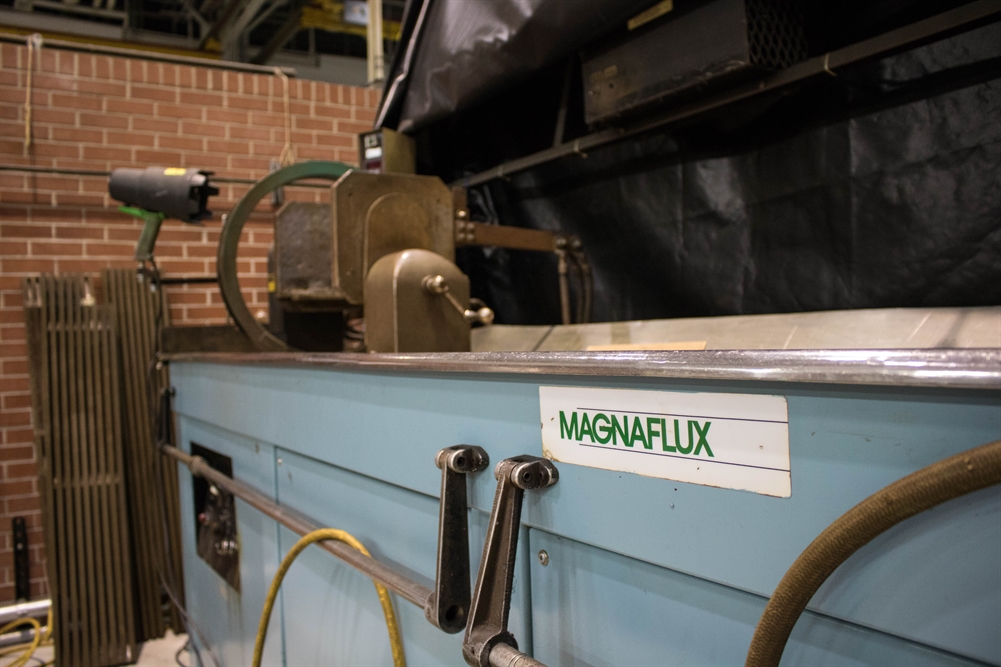Por Brian K. Batteiger, Gerente de Servicios en END

Tal como es de relevante cambiarle el aceite a un automóvil, el mantenimiento preventivo básico es una forma fácil y económica para que los profesionales en END puedan aprovechar al máximo sus inspecciones por partículas magnéticas y asegurarse de que sus inversiones en equipo perduren. Por ejemplo, no retirar los paneles de ventilación de máquina para verificar que los ventiladores de enfriamiento estén en buen estado o no eliminar la suciedad y el polvo de los rectificadores, contribuye a que su máquina eventualmente desarrolle problemas, al igual que lo haría un automóvil si no se le realizan los servicios de aceite a tiempo.
Una de las razones por la que algunos profesionales de END no prestan atención al mantenimiento de los equipos por partículas magnéticas es que interpretan la norma ASTM E1444 como una guía de mantenimiento operativo. Es importante calibrar regularmente su medidor de precisión, verificar el temporizador de disparo etcétera, como lo indica la norma, pero no es suficiente para mantener su equipo en estado óptimo.
He visto casos en los que el amperímetro de la máquina estaba calibrado con precisión, dentro de una tolerancia mucho más estricta que la especificada, pero la forma de onda que produjo la máquina (responsable de magnetizar la pieza) no era la correcta. En estos casos, los responsables sabían claramente qué corriente se aplicaba a la pieza, pero no sabían si las piezas habían sido magnetizadas correctamente. ¿A quién le gustaría correr este tipo de riesgo?
La buena noticia es que, incluso si no ha mantenido su equipo de partículas magnéticas en forma con un mantenimiento regular, puede comenzar a realizar verificaciones de mantenimiento simples de inmediato.
Todos los días, los operadores deben realizar inspecciones visuales de los componentes externos del equipo para partículas magnéticas. Algunos puntosa tomar en cuenta son el desgaste de los cables y la pérdida de conexiones entre mangueras y accesorios.
Una vez por semana, el operador debe limpiar las almohadillas o placas de contacto y limpiar el sistema de bomba. Limpiar los desechos del tanque y cambiar el baño regularmente son críticos para inspecciones confiables; Las bombas son buenas para hacer circular el fluido y las partículas magnéticas, pero no funcionan bien con las toallas de papel, tuercas o tornillos que se puedan introducir en el tanque.
Todos los meses, el operador debe verificar y limpiar el tanque, los ventiladores y el filtro de aire si es necesario. A veces, el mantenimiento preventivo puede ser un poco más "preventivo" en su naturaleza, dependiendo del entorno en el que se encuentre la unidad. Por ejemplo, las fundidoras e instalaciones con aire grasiento y grasoso necesitan examinar sus máquinas con más frecuencia para minimizar el tiempo de inactividad. Si bien nuestros equipos son excelentes para detectar defectos con partículas magnéticas, el aire aceitoso y las partículas magnéticas no se llevan bien con los componentes eléctricos dentro de una bancada.
Si bien el mantenimiento preventivo es simple y fácil de hacer, hay controles de mantenimiento periódicos más avanzados en los que querrá contratar a un profesional de mantenimiento capacitado. Como ejemplo, es simple para un técnico capacitado de un Centro de Servicio Autorizado de Magnaflux verificar la forma de onda antes de calibrar una máquina, pero la mayoría de las compañías no tienen el equipo o la experiencia para realizar este análisis por sí mismas. Además, los técnicos de ASC podrán resolver adecuadamente un problema si ven algo mal durante el mantenimiento.
El objetivo principal del mantenimiento preventivo es asegurarse de que su equipo tenga el máximo rendimiento y haga el trabajo para el que fue diseñado. Puedo contarles más de una historia en la que recibí una llamada de un cliente que me platicaba que su equipo no funcionaba y que necesitan que funcionara inmediatamente, pero jamás habían realizado ningún tipo de mantenimiento al equipo en meses o años en algunos casos.
El mantenimiento preventivo debe ser un proceso continuo. La frecuencia con la que debe hacerse dichos mantenimientos variará de una máquina a otra, según la frecuencia con la que se use y el tipo de piezas que se inspeccione, cuanto más crítica sea la pieza, más a menudo se requiere el mantenimiento.
Suscríbase a las Noticias de Magnaflux:
155 Harlem Avenue
Glenview, IL 60025, USA
Teléfono: +1 847-657-5300
Fax: +1 847-657-5388
Contactar con el servicio de atención a cliente Magnaflux